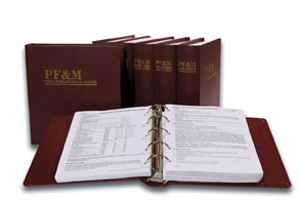|
PF&M At a Glance Dwelling fire
At one time, the dwelling fire line of business was the only option for writing non-commercial property insurance. The Dwelling Fire Policy (predecessor to the standard fire form) offered modest coverage for residential property and personal contents. As time passed, the evolution of specialized forms eroded its prominence. No event had a larger impact on the dwelling fire line of business than the introduction of the homeowners policy. The availability of a package coverage form that protected an individual’s property and provided coverage against losses involving his or her legal liability to others substantially reduced the amount of business written under the dwelling fire program. Today, it is rare to find a company that handles dwelling fire as anything more than a method to accommodate private residential risks which, for various reasons, don’t qualify for homeowners coverage. Typically, coverage is written under a dwelling form due to: There are other reasons for writing a dwelling policy. Some residential property may be obsolete. Such may be the case for a very old, well-maintained home that has a high market value. However, the home’s structural features (ornate scrollwork; custom, old fashioned flooring; old nonstandard cabinetry; stairwells; etc.) may make it impractical to cover under a replacement cost, homeowners contract. Losses under dwelling fire policies are usually paid on either an actual cash value or a repair cost basis. The former is used for total losses and the latter for partial losses (except when the cost to make repairs exceeds the damaged property’s actual cash value). Another reason for selecting dwelling policy coverage may involve a building’s occupancy. Dwelling fire coverage is often selected for rental or non-owner occupancy (as an example, a home owner who, for free, has arranged for a friend to use his home for an extended period). Other situations that may call for use of dwelling fire coverage are lack of full-time occupancy (secondary or seasonal homes) or type of property (mobile homes and minimal value manufactured homes). Another very common situation that is handled by dwelling fire coverage is residences that are under construction. The earliest version of the Dwelling Fire Policy protected dwellings and personal property against loss from a handful of perils (typically fire, explosion, smoke, vandalism and wind). Protection is now much broader, rivaling the coverage available under Homeowners Program forms. Dwelling fire coverage can be written under a basic, broad or special coverage form, protecting dwellings, other structures (sheds, unattached garages, barns, pagodas, greenhouses, etc.) and/or personal property. The historical difference between homeowners and dwelling fire policies was that the latter included only property coverage. However, for a number of years, insurers have offered the option of adding premises liability protection and medical payments coverage for minor injuries to third parties. Today’s dwelling coverage, epitomized by the program offered by Insurance Services Office (ISO), is structured along the same lines as standard homeowners protection, especially when the property coverage is endorsed to include liability coverage. The ISO dwelling fire coverage uses coverage parts A, B, C and D to handle a described dwelling, other structures, residence contents and extra living expense exposures respectively. The policy insuring agreements, conditions, limitations and exclusions are very similar to the homeowners program, with the substantive differences being, as mentioned above, the scope of coverage (mainly named peril on building property) and the loss settlement basis (actual cash value or repair cost rather than replacement cost). In any case, the dwelling fire program is quite viable due to its availability to handle classes of property that are avoided by the underwriting and marketing parameters of most insurers’ homeowners programs. Please note that this is only an overview of this coverage. A thorough discussion of the program may be found in the PF&M Analysis from The Rough Notes Company. Agency OnLine subscribers, please refer to PF&M Section 423.4-2, Coverage Analysis of the ISO Dwelling Policy Program - Special Form DP 00 03 for more details on ISO’s broadest dwelling fire form. * |
|
|



